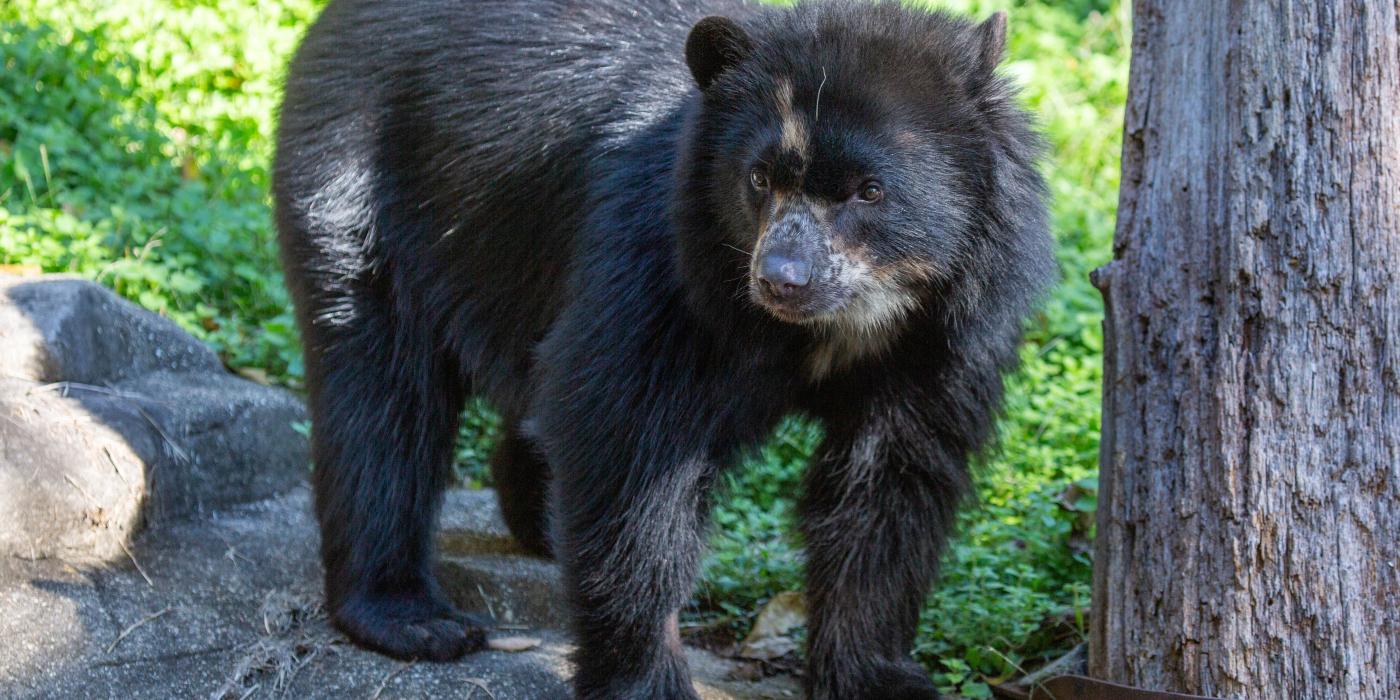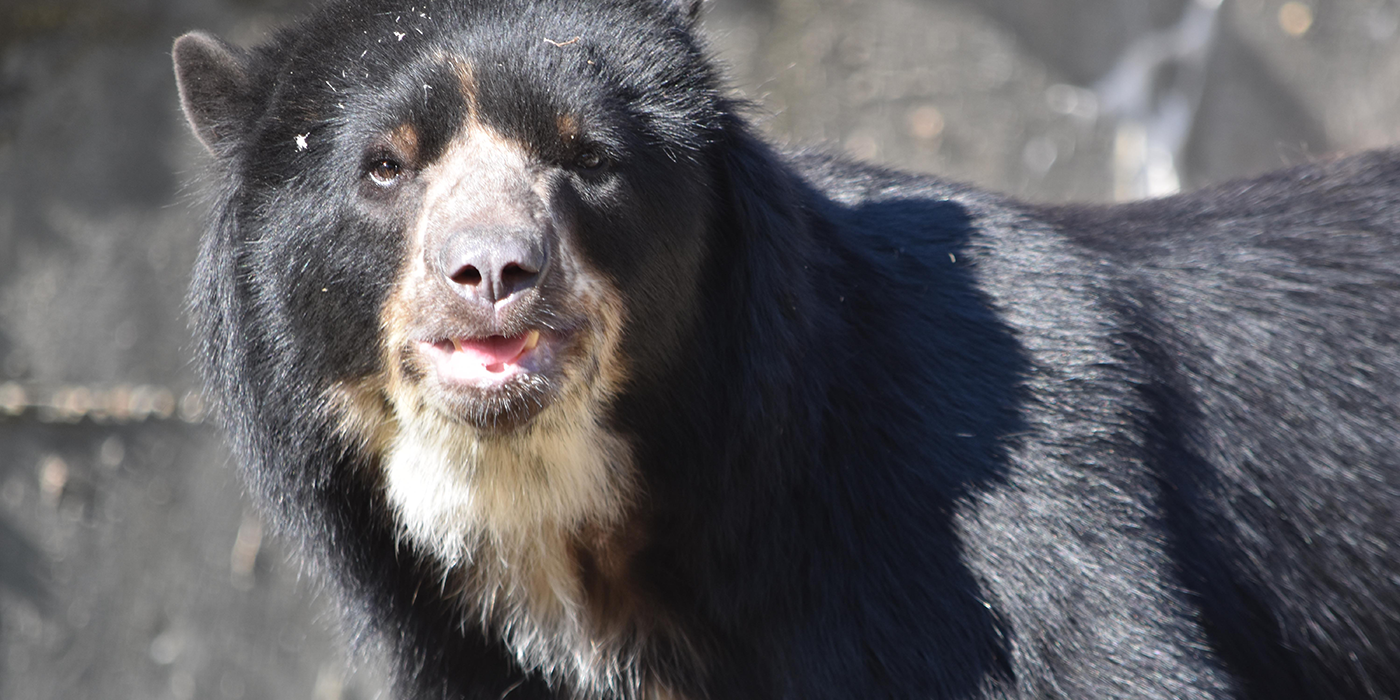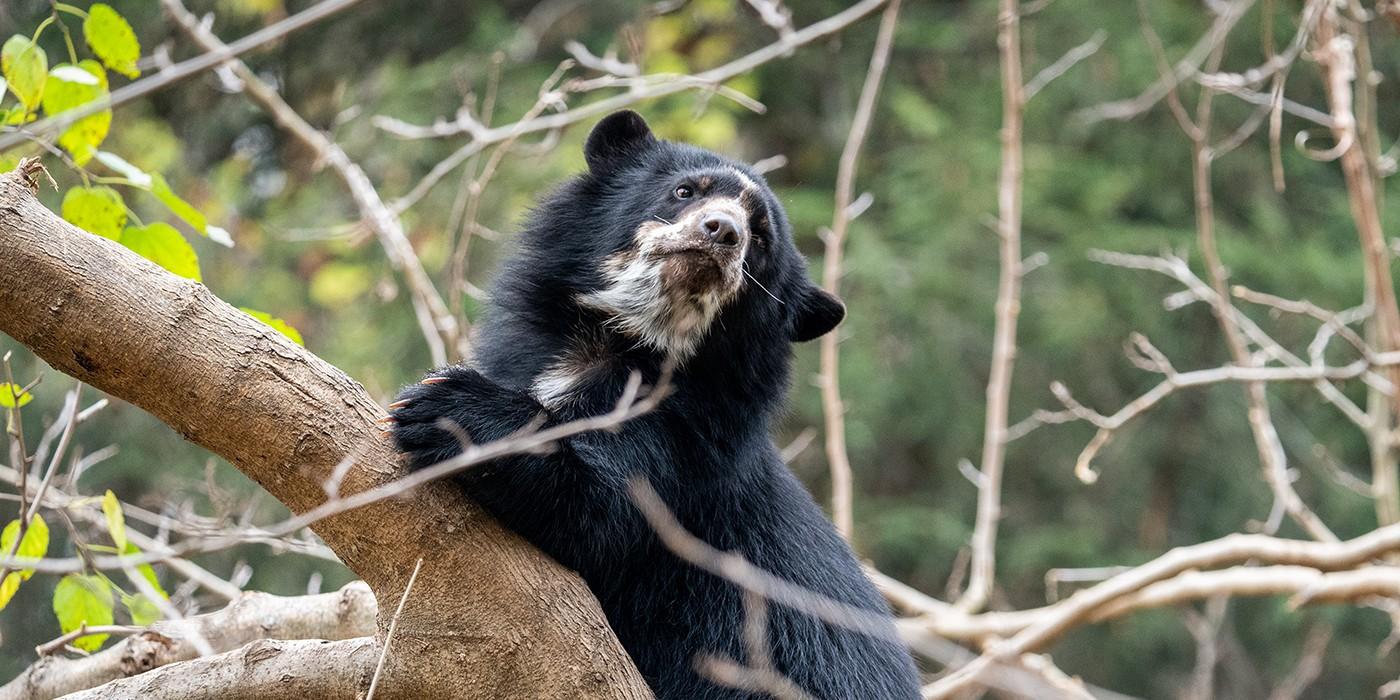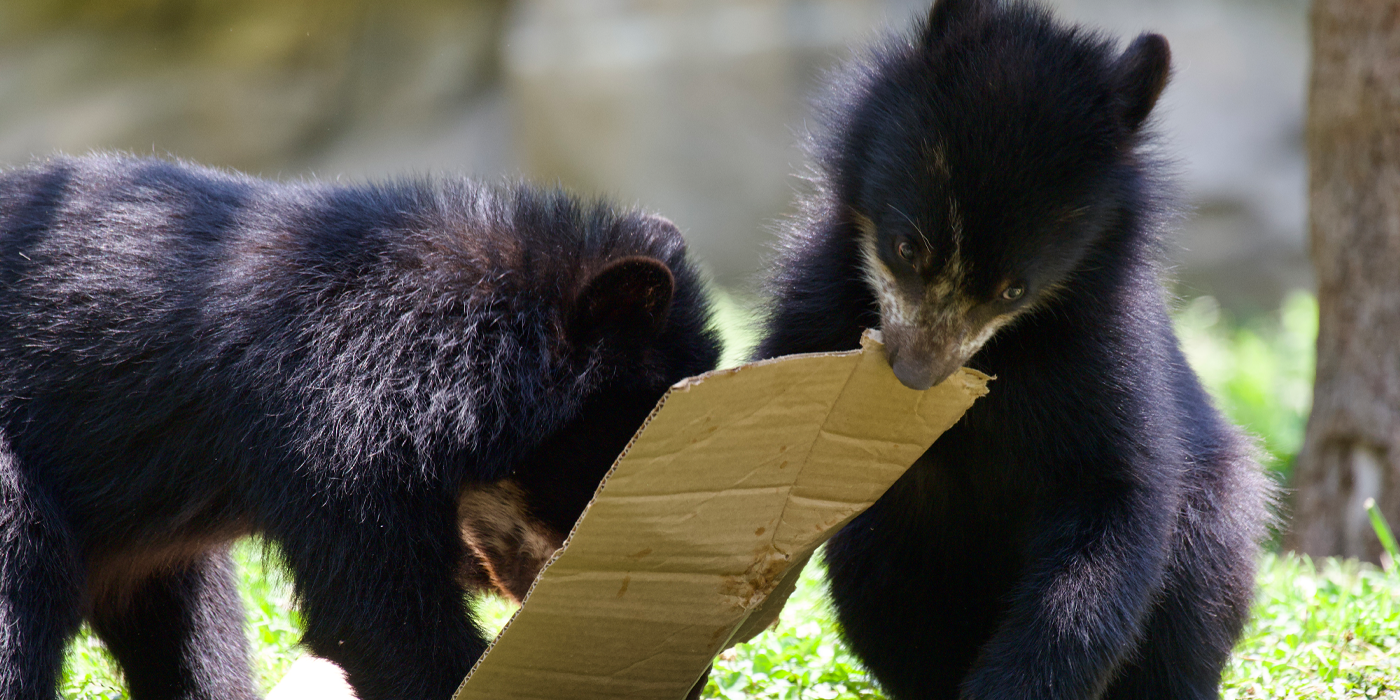New at the Zoo: Meet Andean Bear Brienne
The new bear in town is curious, daring and incredibly charming—meet Andean bear Brienne! This fall, she joined her grandmother Billie Jean and beau-to-be Quito at the Smithsonian’s National Zoo. She arrived in Washington, D.C., Sept. 9 from the Queens Zoo in New York and is getting acquainted with her new surroundings and neighbors. Learn all about her personality and quirks in this Q+A with keeper Sara Colandrea.
How would you describe Brienne’s personality?
Just like people, each of our Andean bears has their own unique personality. They are so fun to get to know! It takes some time to develop a relationship with an animal and truly know their personality, and Brienne is no exception. When she first arrived, Brienne was cautiously curious and aloof. In exploring her habitat, though, her curiosity got the better of any fear she may have had. Now that she has settled in, she is much more daring. We often see her running along the edges of the rockwork in her habitat or taking a nap way up high in the tree canopy. From these two vantage points, she can see her grandmother Billie Jean—the “queen bee”—and our young gentleman, Quito.

How do you tell them apart?
Andean bears have unique facial markings. They can be very mild (nearly all black) to a bold cream color that encircles their eyes (hence their nickname “spectacled bear”) and continues down their chest. These markings are unique, just like our fingerprints. Billie Jean has a triangle shape on her forehead, Quito has a hook over one eye and Brienne has a lightening bolt on her forehead.
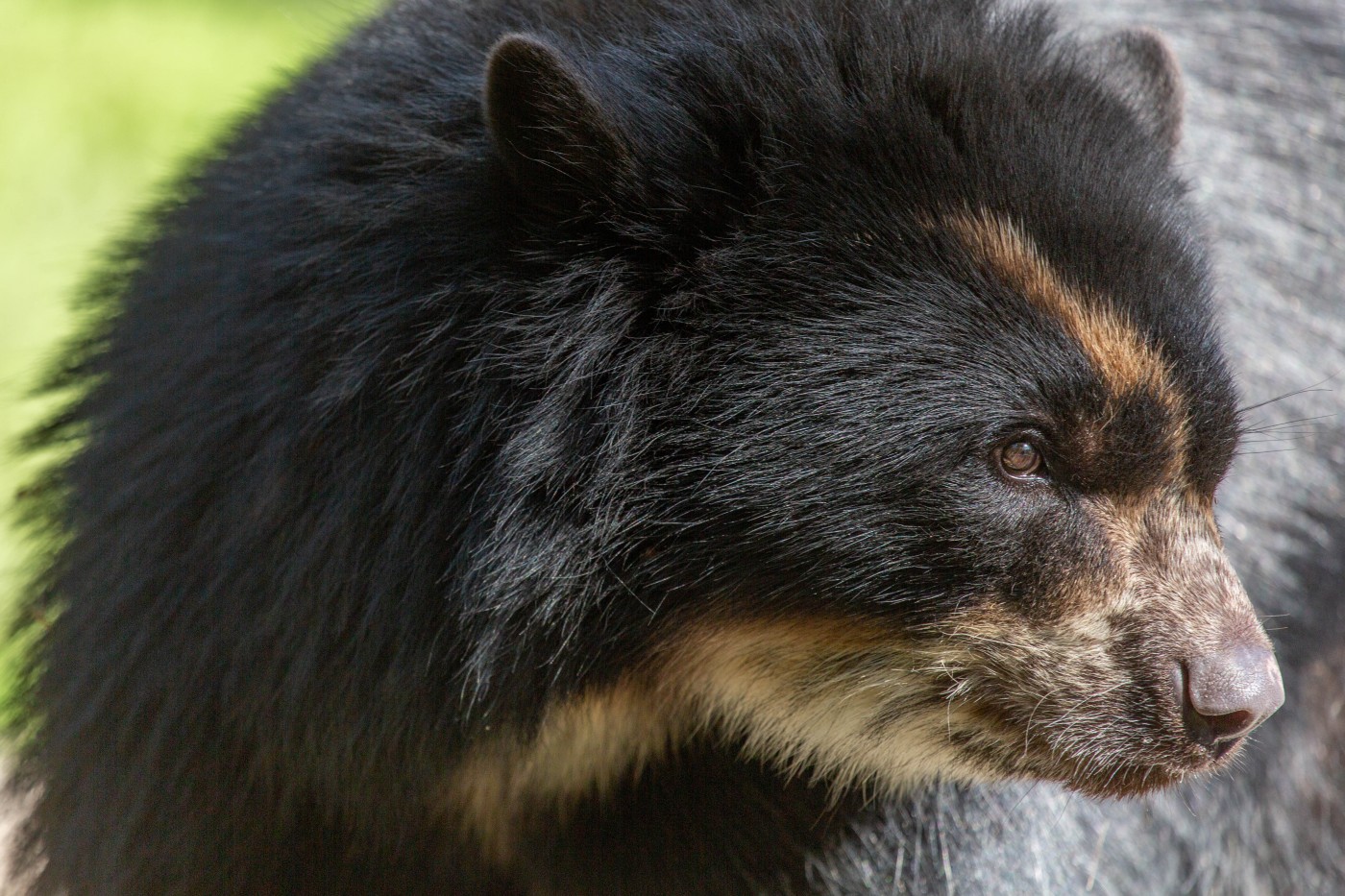
What do you enjoy most about caring for Andean bears?
I don’t think anyone could work with these bears and not fall in love with them! They are all very inquisitive and intelligent. When we present them with enrichment items, I can see their minds at work, figuring out how to get them apart. Watching them build nests and create beds for themselves is fascinating, too. They take such care to place the browse (leafy branches) and hay the way they like it and fluff it up just so before they sleep.
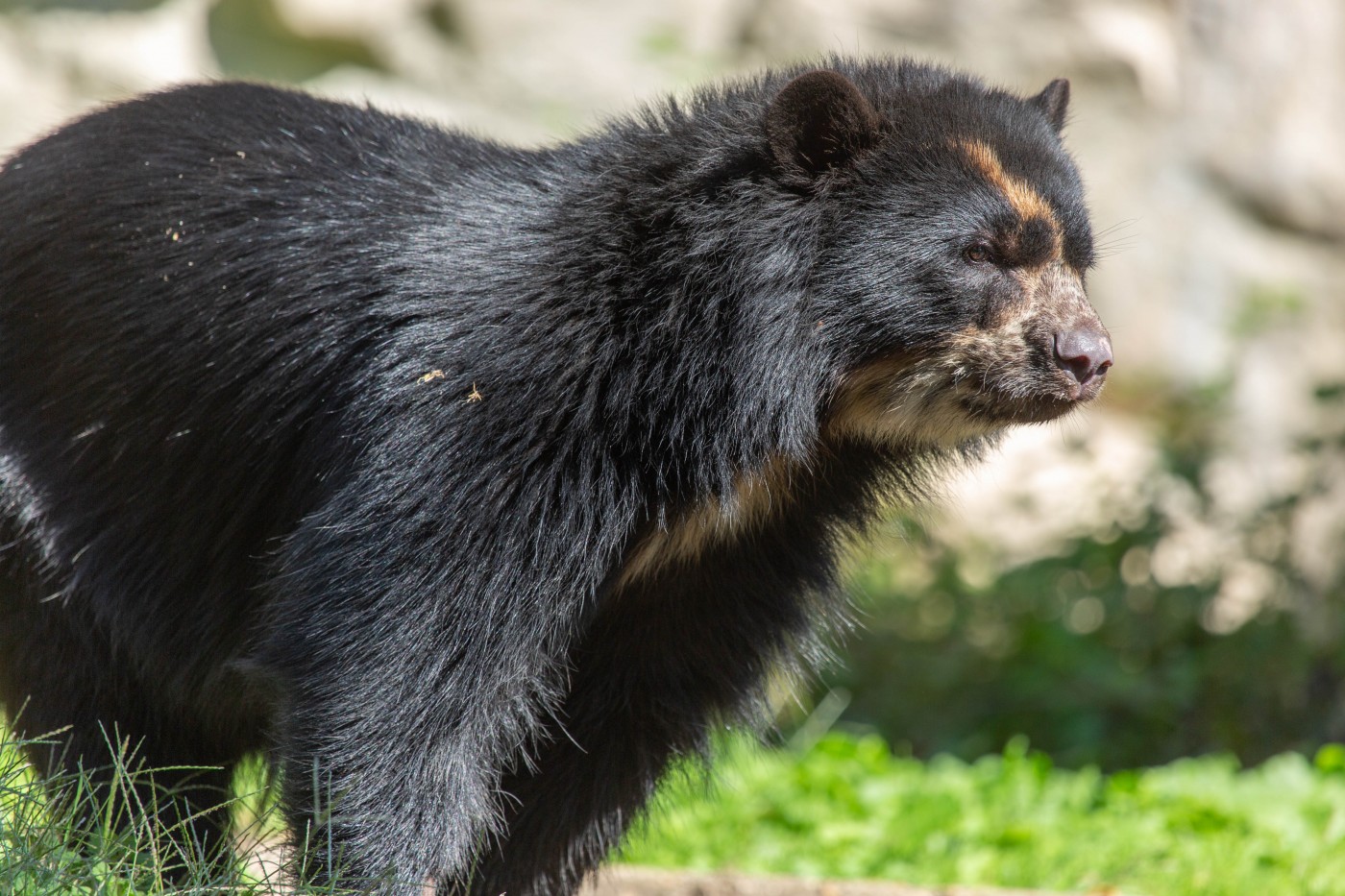
Why did Brienne come to the Zoo?
In a little over a year, Brienne will be of breeding age. Brienne and Quito are a recommended breeding pair. Although it is too soon for them to be sharing the same physical space, they have been able to see, smell and hear one another through the “howdy” door mesh that separates their indoor enclosures. Brienne seems curious about Quito but is a bit nervous about being too close to him. She will approach the howdy door to get a better look at him, but from a distance. Quito, being the gentleman that he is, will vocalize with a “trill” (a happy solicitation call) and lay down next to the door and watch her.
There are just under 40 Andean bears in the Species Survival Plan (SSP). As the studbook keeper and SSP coordinator, I keep track of all the Andean bears in the North American SSP—details about where they live, how they are related and information about their personalities, temperament and health. Using that information, I make recommendations about which bears should breed to ensure zoo populations are as genetically diverse as possible. In addition to helping facilitate movement between zoos, I serve as the “go to” person for any facility that needs information about exhibiting, breeding, or cub rearing these bears.
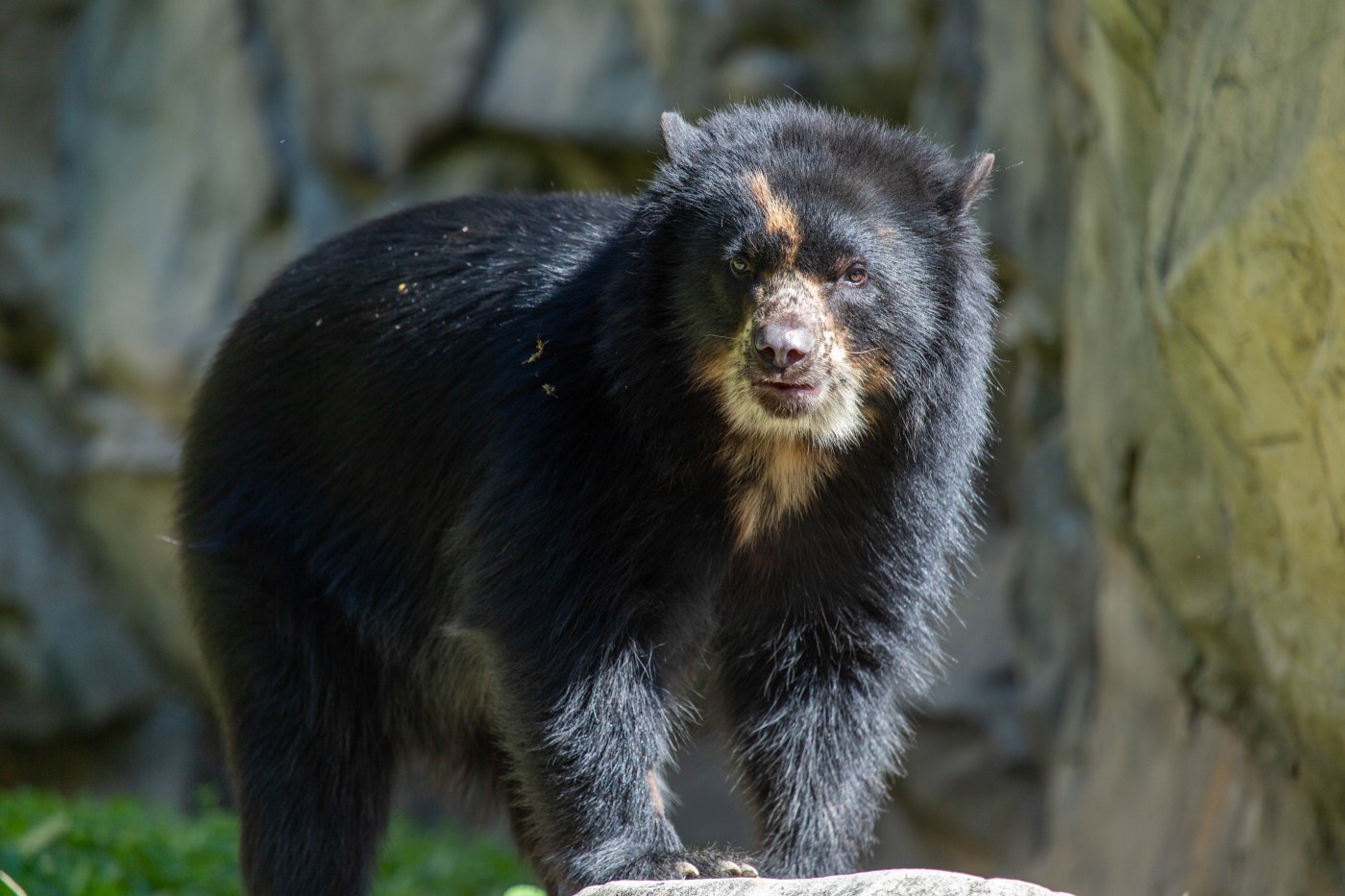
Does she have a favorite enrichment item?
Brienne gets a wide variety of toys, but like Billie Jean and Quito she seems to enjoy objects with unique scents. To encourage the bears to explore, we sprinkle spices or spray extracts around their habitat. When they find them, they rub the substance all over their bodies (called scent-anointing)!
As part of their diet, the bears receive a wide variety of fruit, root vegetables, nuts and pellets. On any given day, the “menu” may feature a mix of kiwi, apple, pear, melon, mango, papaya, grapes, sweet potato and carrots. Brienne really enjoys melon and is not too fond of non-root vegetables. She is great at climbing, so we will scatter and hide her food in trees. It’s great fun for her to exercise her natural climbing abilities and follow her nose to the treats.
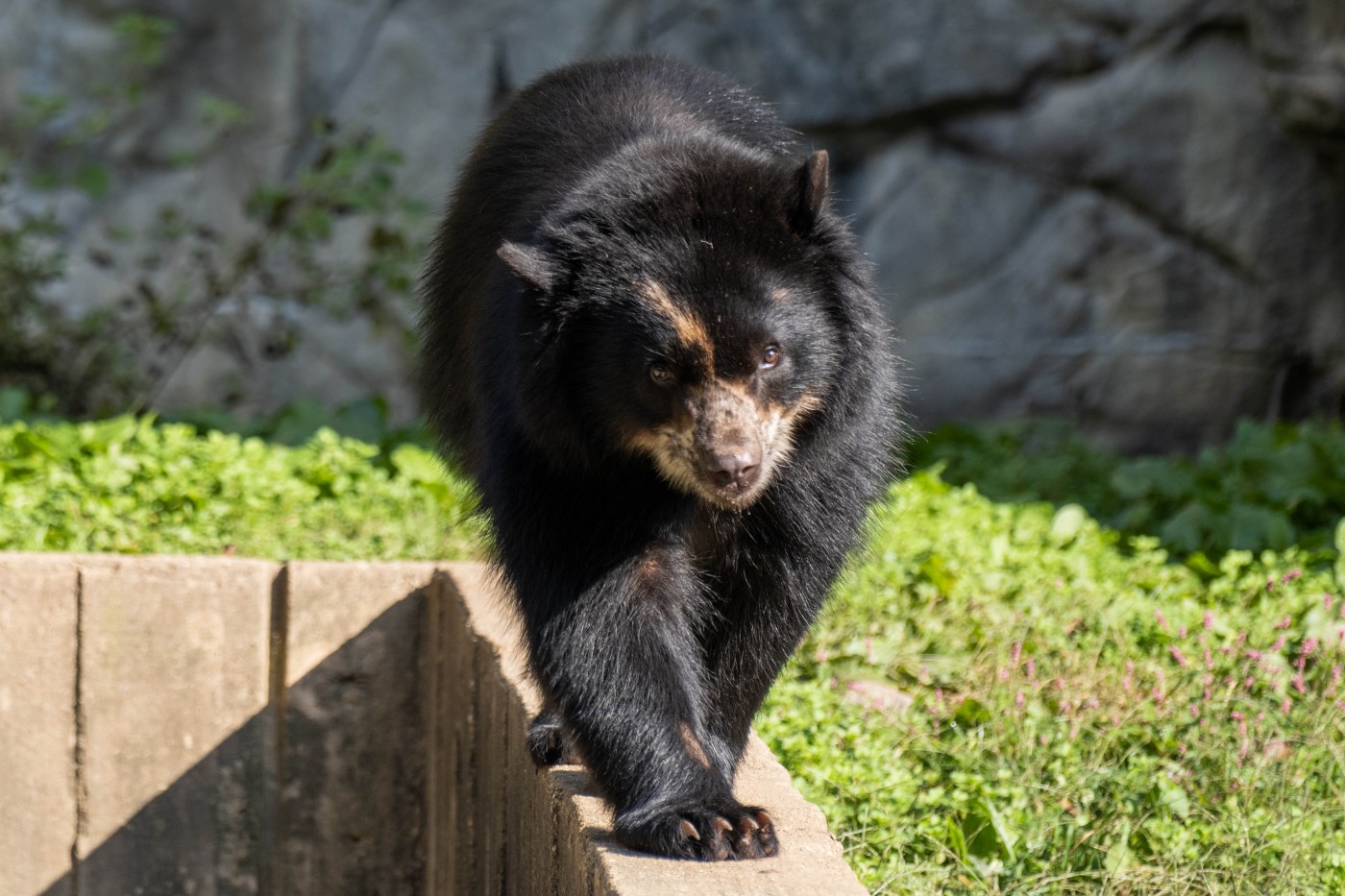
What do you hope visitors take away from meeting Brienne?
I hope that in meeting Brienne, Billie Jean and Quito that people realize how wonderful Andean bears are and are motivated to help save them. Most people are familiar with giant pandas, polar bears and black bears. Andean bears are one of only eight bear species in the world. Although they are less common than some bear species, they are critically important to their ecosystem.
Andean bears live in the Andes and outlying mountain ranges, from western Venezuela south to Bolivia. They are considered vulnerable by the International Union for Conservation of Nature mainly due to deforestation. Their habitat today is a fraction of what it was historically.
One very simple action you can do at home to help Andean bears is to purchase food or beverages that are sustainably sourced (such as the Smithsonian Migratory Bird Center’s Bird Friendly Coffee®). If Andean bears live at a zoo near you, you can support that facility’s research and conservation programs, which help not only the animals within those facilities, but also those in their native habitats. You can also help spread the word, share their stories and help others learn about and fall in love with these charming and charismatic bears!
This story appears in the December 2020 issue of National Zoo News.
The Smithsonian’s National Zoo is temporarily closed to the public to help prevent the spread of COVID-19. Now more than ever, we need your support in our effort to save species. Help the Smithsonian’s National Zoo and Friends of the National Zoo with a special tax-deductible gift today.
Related Species:

